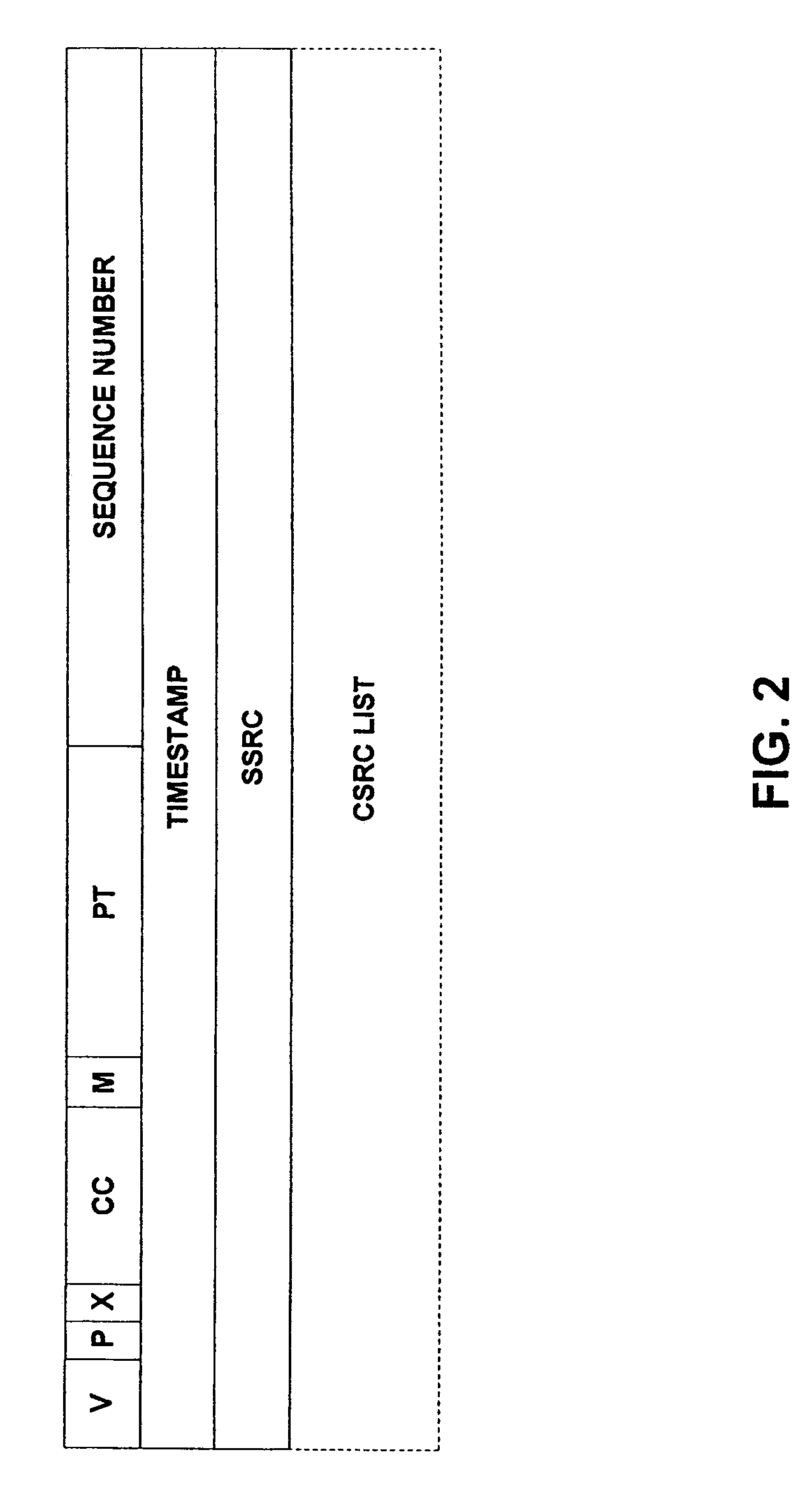Managing a packet switched conference call
a conference call and packet switch technology, applied in data switching details, special services for subscribers, data switching networks, etc., can solve the problem of not being able to determine which terminal provides voice data, and achieve the effect of improving the user interface of the terminal
- Summary
- Abstract
- Description
- Claims
- Application Information
AI Technical Summary
Benefits of technology
Problems solved by technology
Method used
Image
Examples
Embodiment Construction
[0040]An embodiment of the method according to the invention will now be described with reference to FIGS. 1 to 3.
[0041]The embodiment supports the management of VoIP conference calls and is implemented in an RTP based system which comprises a UMTS network 11, a conference call server 12 including an RTP mixer 15 connected to the network 11 and a plurality of terminals 13. The terminals 13 can be connected to the conference call server 12 via the UMTS network 11 by means of RTP tunnels 14. The system thus corresponds in general to the system illustrated in FIG. 1, which has already been described above.
[0042]For setting up a VoIP conference call in this system, the Session Initiation Protocol (SIP) is used as signaling protocol. SIP is used together with the Session Description Protocol (SDP) to send invitations to the called parties and to agree on the voice codecs etc. The users of the terminals 13 join the conference either by initiating the session themselves by sending the SIP ...
PUM
 Login to View More
Login to View More Abstract
Description
Claims
Application Information
 Login to View More
Login to View More - R&D
- Intellectual Property
- Life Sciences
- Materials
- Tech Scout
- Unparalleled Data Quality
- Higher Quality Content
- 60% Fewer Hallucinations
Browse by: Latest US Patents, China's latest patents, Technical Efficacy Thesaurus, Application Domain, Technology Topic, Popular Technical Reports.
© 2025 PatSnap. All rights reserved.Legal|Privacy policy|Modern Slavery Act Transparency Statement|Sitemap|About US| Contact US: help@patsnap.com



